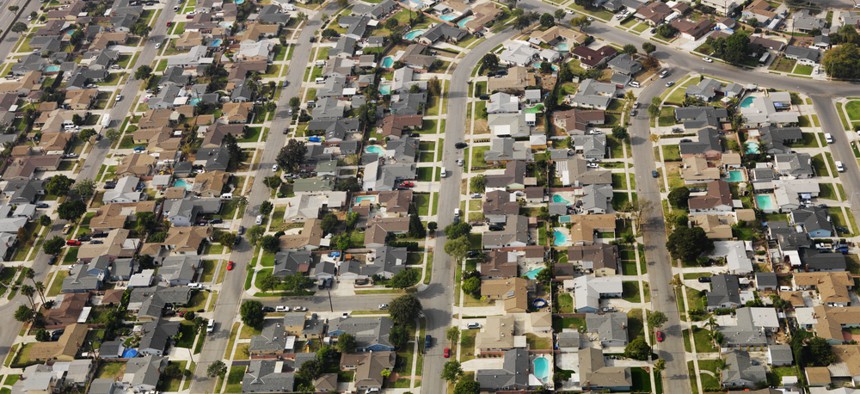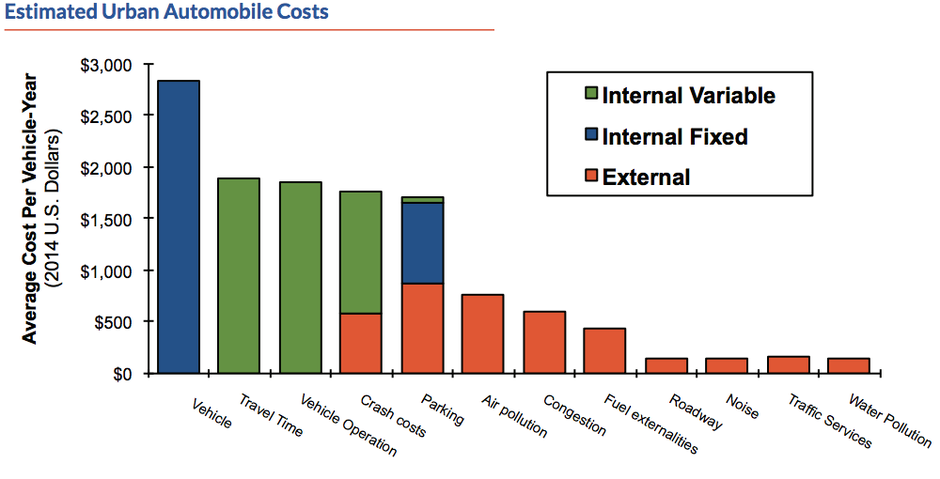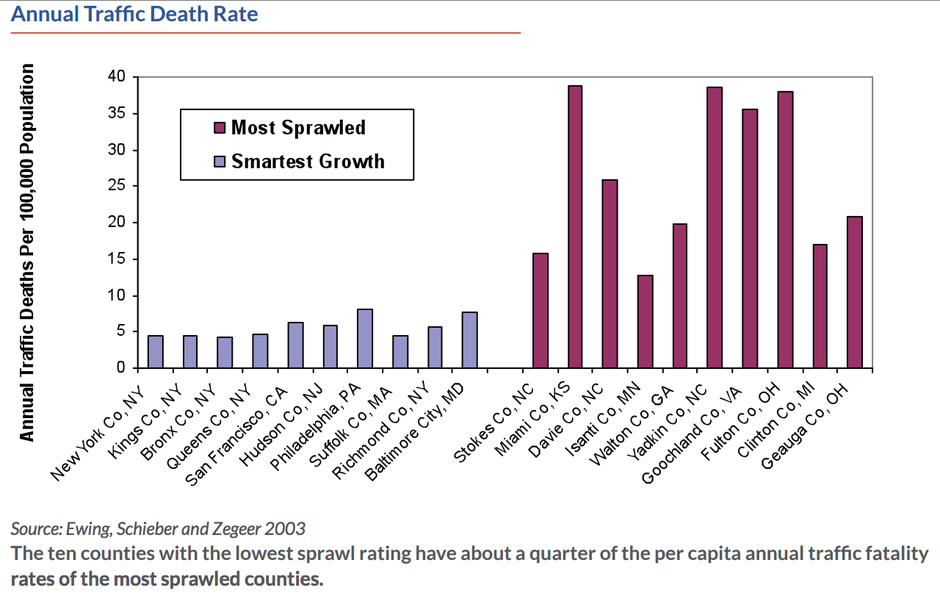How Much Sprawl Costs America

Volt Collection/Shutterstock.com
More than $1 trillion, according to a new report.
More and more young people are moving to urban centers because they prefer to live in walkable areas with lots of public transportation options. Still, developers are reluctant to build compact housing using this smart growth approach. But perhaps a new economic case against sprawl can convince these developers to think twice.
Sprawl costs America over $1 trillion a year, according to a new report by LSE Cities and the Victoria Transport Policy Institute , because it can increase per capita land consumption up to 80 percent and car use by up to 60 percent. Together these outcomes create social costs that amount to $626 billion a year for people living in sprawling areas and $400 billion for those outside of them, the report estimates.
The report argues that sprawl-related land consumption displaces economically-beneficial agricultural lands, and therefore, reduces local agriculture-based business activity. Because people are spread out, governments spend more money to construct longer roads, as well as sewage and power lines, to make sure all residents are covered.
Sprawl also tends to require more driving, and more people in cars means more people spending thousands of dollars on maintenance and gas (first chart below). Obviously, more cars on the road also means more traffic accidents (second chart) and pollution (third):
That's not to say sprawl has no benefits. Big single-family home in the suburbs definitely provide more space, more privacy, and less noise and air pollution. These areas tend to have less crime and better schools. Developers know this well, as Alana Samuels recently wrote :
Americans want space, they say, and they want backyards and private patios and big closets and places to park their big cars.
But compact urban development doesn't necessarily exclude the construction of single-family homes. The report makes clear that single-family homes and spacious townhouses fit within the confines of a city smart growth plan, too.And although these single-family homes can be expensive to buy, the report also argues that "smart growth" offers a variety of affordable housing types overall, and cuts down on infrastructure and transportation costs.
Developers, are you listening?
( Top image via Volt Collection / Shutterstock.com )









